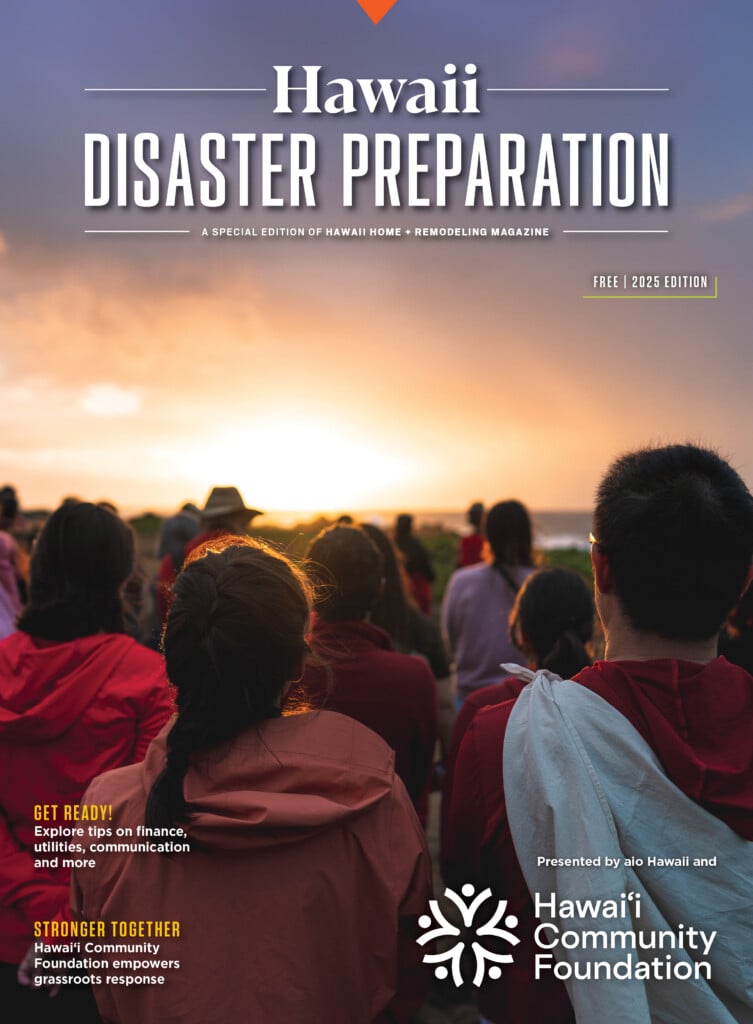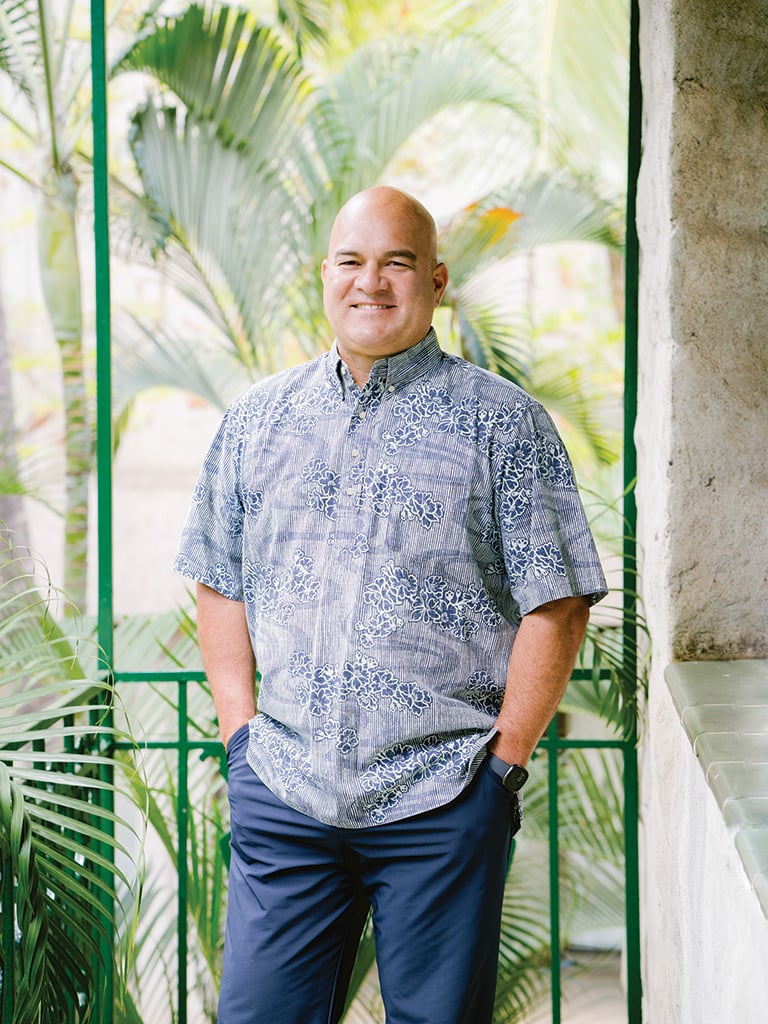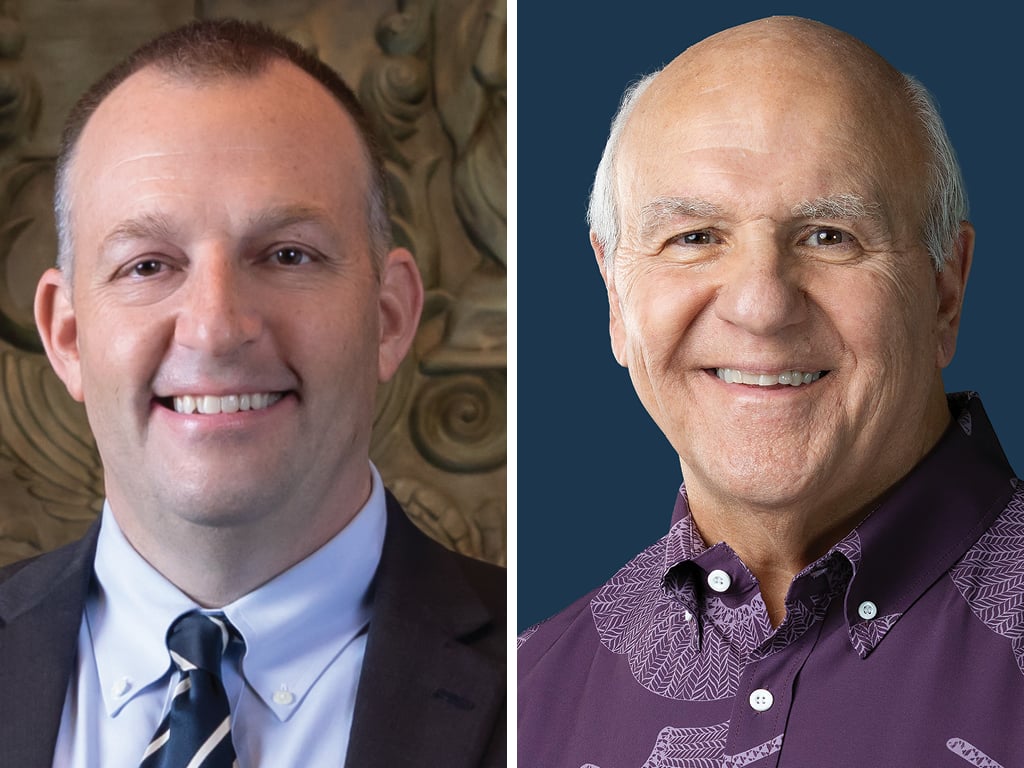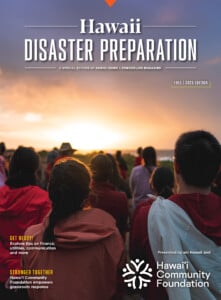Weathering Change
Chip Fletcher explains how natural hazards are evolving and impacting Hawaii’s future.
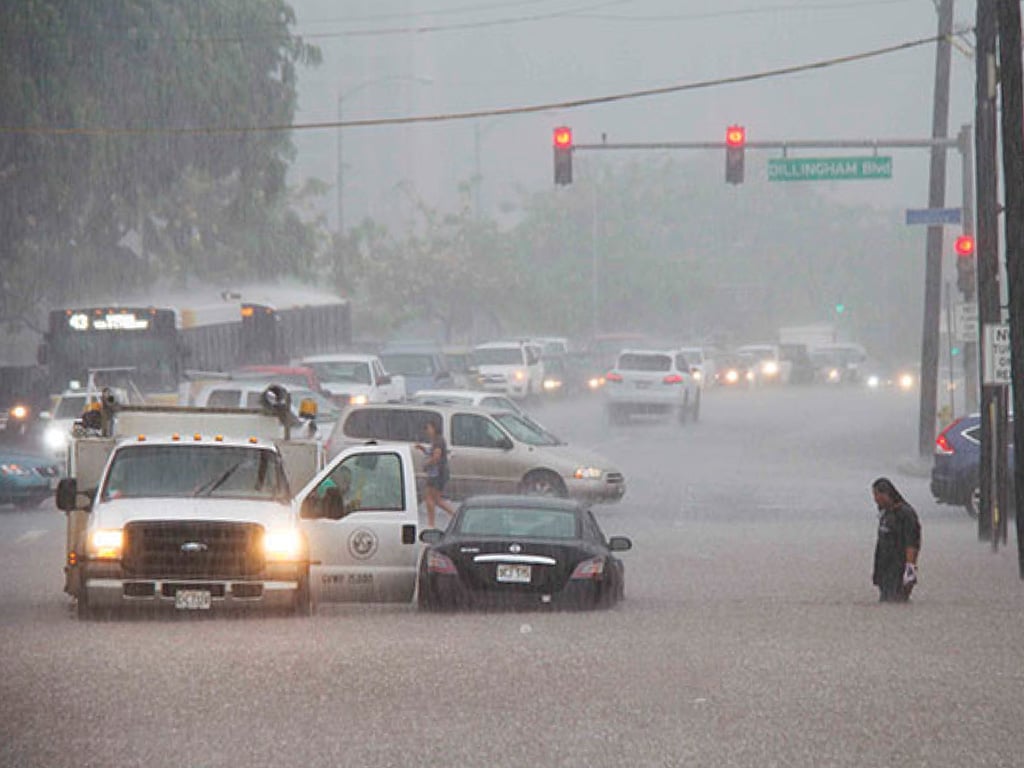
Featured photo: Flash flooding turns Dillingham Boulevard in Kalihi into a hazardous thoroughfare.
With decades of research focused on sea level rise, coastal erosion and climate resilience, Chip Fletcher has become a leading local voice in disaster impact studies. We caught up with the dean of the University of Hawaii at Manoa’s School of Ocean and Earth Science and Technology to gain insights and practical tips for Island homeowners.

Chip Fletcher, dean of the University of Hawaii at Manoa’s School of Ocean and Earth Science and Technology.
What natural hazards should Hawaii homeowners be most concerned about — and how are those risks changing?
Climate change is real, and it’s accelerating the threats we face. Hurricanes are a major concern — they’re shifting away from the equator and becoming stronger, bigger and wetter. A low-category hurricane can now intensify to a high-category storm overnight. Storm surge — the number one cause of fatalities in a hurricane — will worsen as sea level rises.
Hawaii is also experiencing more intense rainfall. As droughts become more severe, we go longer without rain — when storms do come, they’re more intense and bring heavier flooding. The soil can’t absorb the water fast enough, which leads to dangerous runoff.
Another growing concern is heat. In 2019, Hawaii was surrounded by a marine heat wave, and we recorded the hottest day in Honolulu’s history. We’re studying whether that’s a sign of more heat waves to come. Heat contributes to drought, and when precipitation is low, invasive grasses grow rapidly. Those grasses dry out and become wildfire fuel — with strong winds, wildfire embers can travel a mile or more, putting entire neighborhoods at risk.

Coastal erosion is severely damaging beachfront homes on Oahu.
What role do building practices and home design play in helping communities become more resilient?
There are architectural and engineering solutions to these hazards. The challenge in Hawaii is that disaster risk is growing faster than building codes are evolving. By the time a new code is adopted, priorities for disaster mitigation shift again. One idea might be to adopt a long-term code — a more forward-looking standard that doesn’t change for a decade or so.
One improvement I recommend for local homeowners and builders is moving away from slab-on-grade construction. Post-and-pier homes are better-suited for our climate, providing airflow underneath and elevation to protect against flooding. Homes should also be built with a continuous load path, meaning the roof is tied to the walls, which are tied to the foundation. This level of structural integrity is critical for high-wind events.
To prepare for heat, we need more shade — not just through vegetation and trees, but also through smart design features and even water bodies like fountains. If a home is going to use air conditioning, ideally it should run on energy from a solar or photovoltaic system to reduce strain on the grid.

Erosion in Kahala has left debris that’s drawing concern from both residents and environmental advocates.
How is sea level rise affecting our communities?
As the ocean rises, land will erode. In the winter, Oahu’s north shore swells are going to push farther inland; in the summer, the same will happen on the south shore. And high tides, especially king tides, will become more prevalent.
Historically, we’ve tried to protect homes from erosion by building seawalls, which unfortunately end up destroying beaches. Instead, we need to develop a strategic realignment of our shoreline. Our models show that by 2100, about 3,000 properties across the state could be directly threatened by erosion.
We’re also seeing sea level rise affect urban infrastructure. Most of our drainage systems on Oahu are gravity-based, and as ocean levels rise, saltwater backs up into the system. In places like Waikiki and Iwilei, saltwater is already coming up through storm drains and onto the roads. We need to shift to pumped drainage, and the City and County of Honolulu is already working on that transition.

Rising sea levels are eroding the stability of Oahu’s infrastructure and roadways.
Given all these challenges, what gives you hope for Hawaii’s future?
Our indigenous values give me hope. Native Hawaiian ethics are all about our relationships with each other and with the land, across generations. That deep-rooted sense of connection helps us see the land not just as something to protect, but as something that can work with us and for us.



